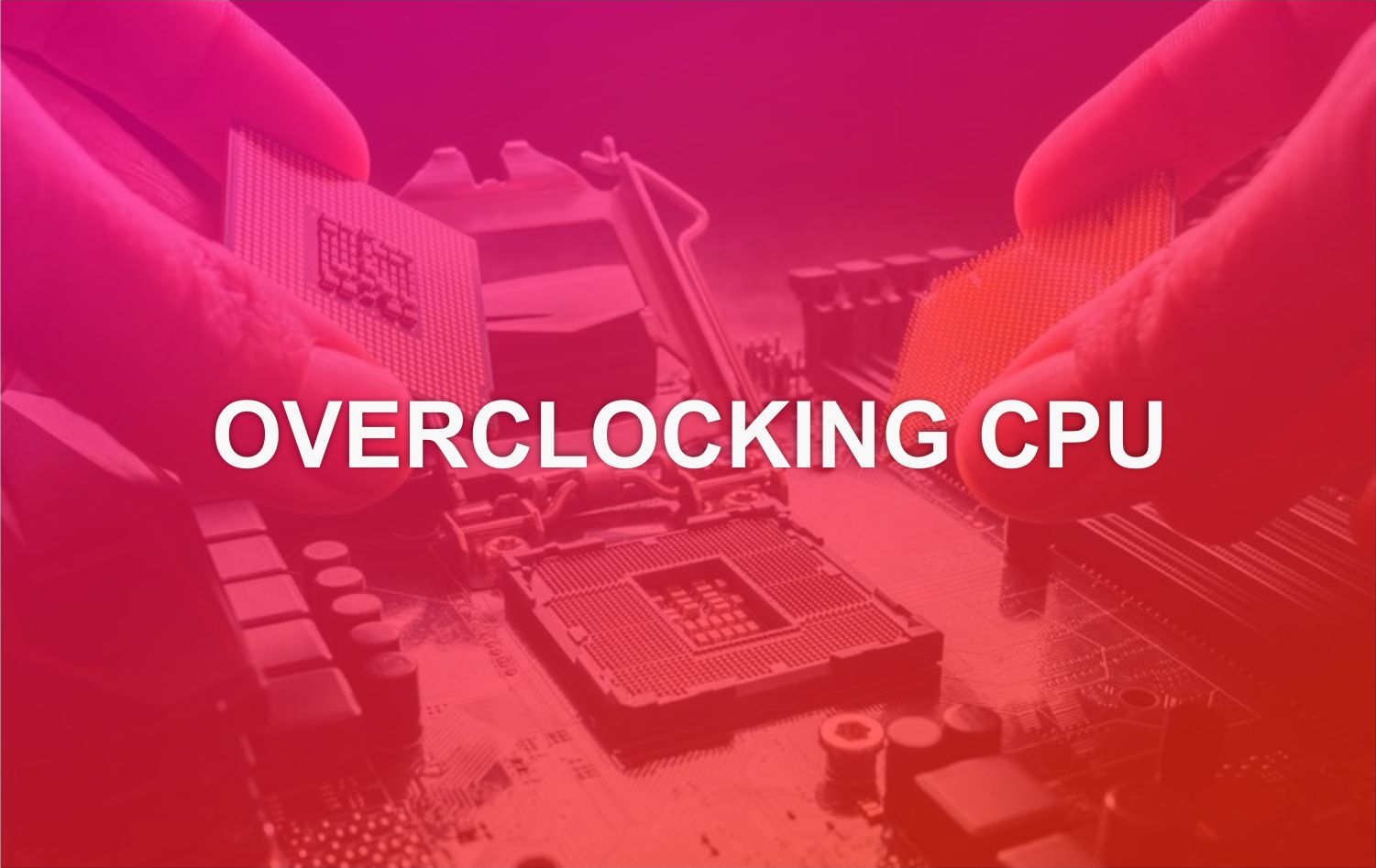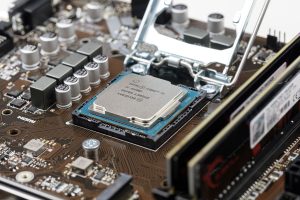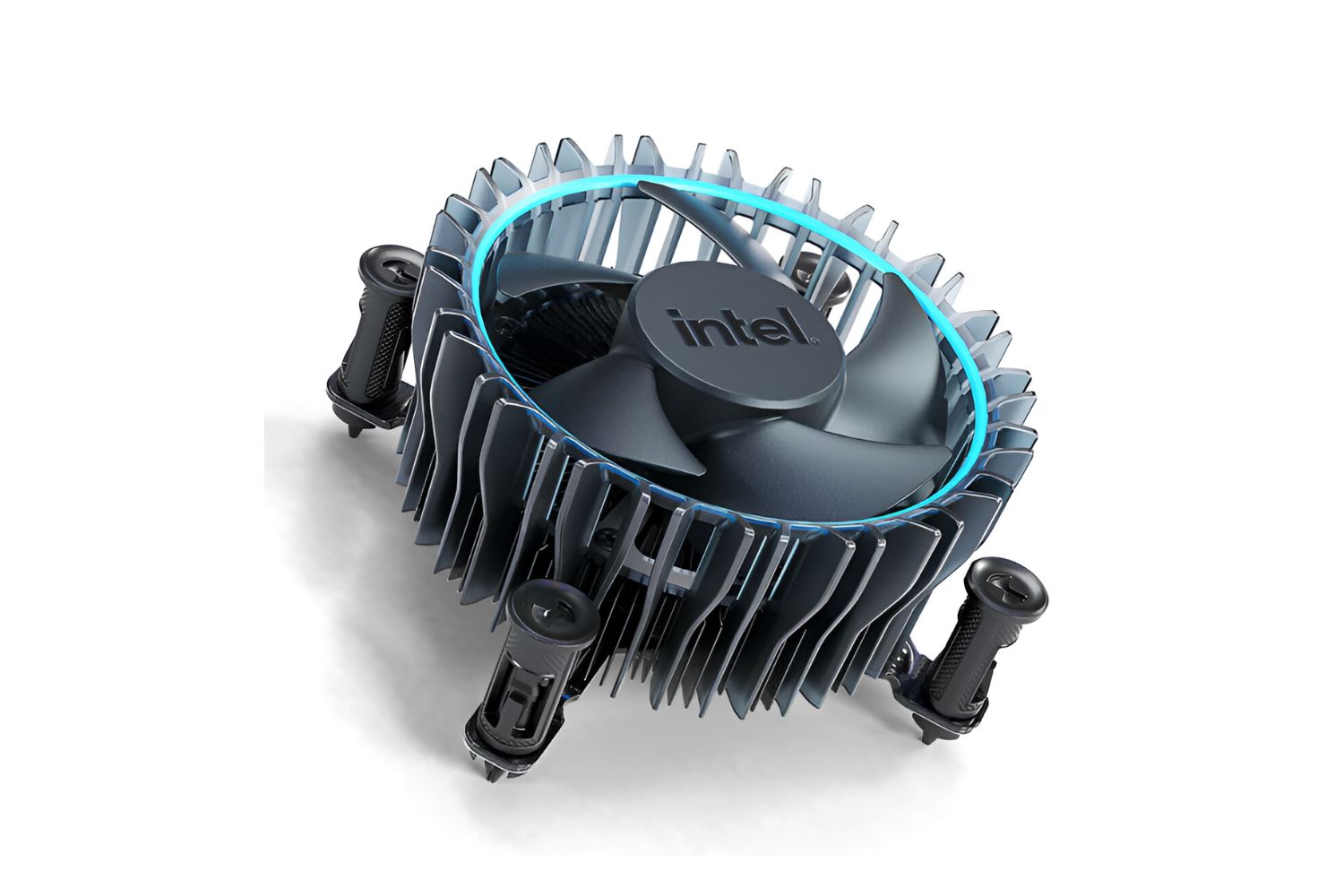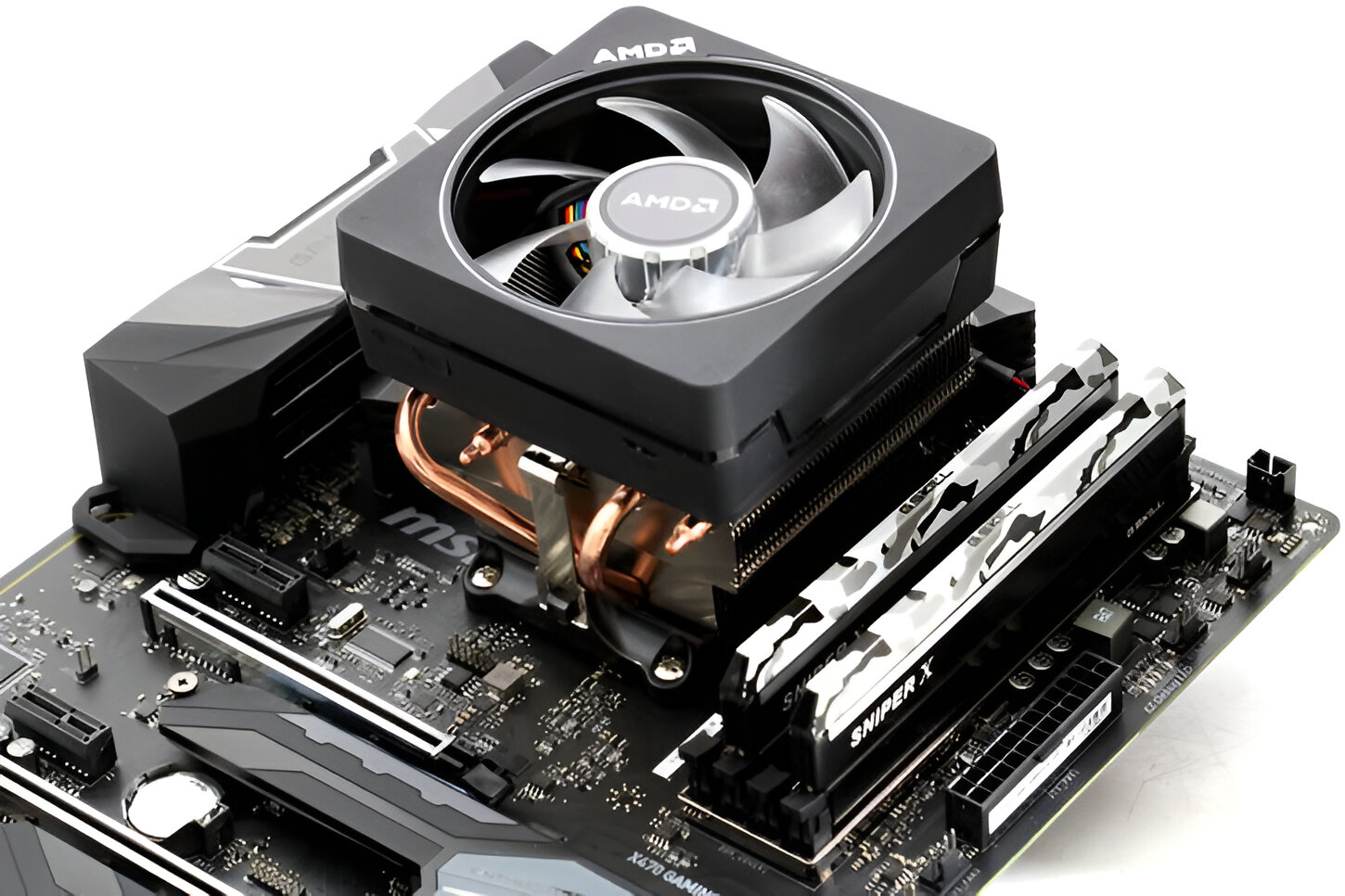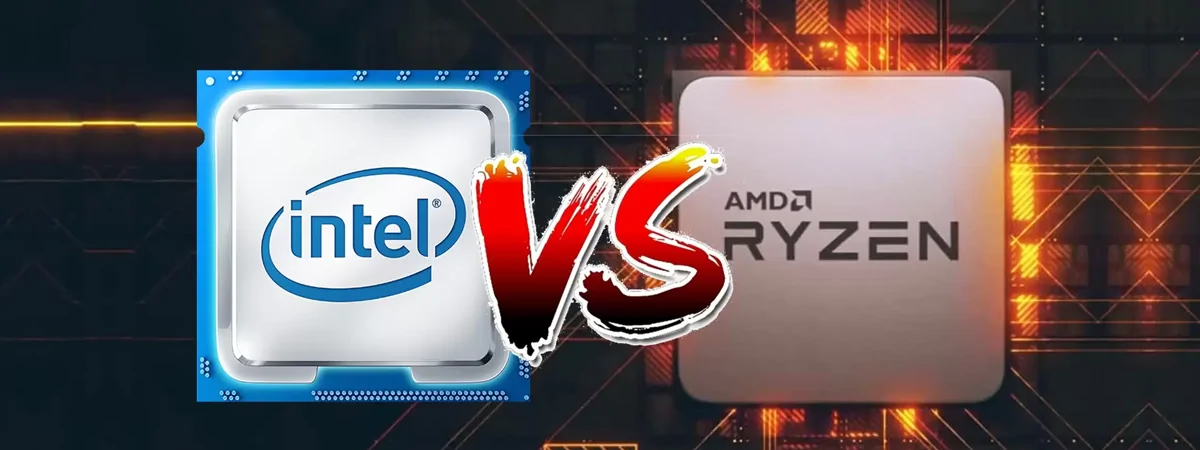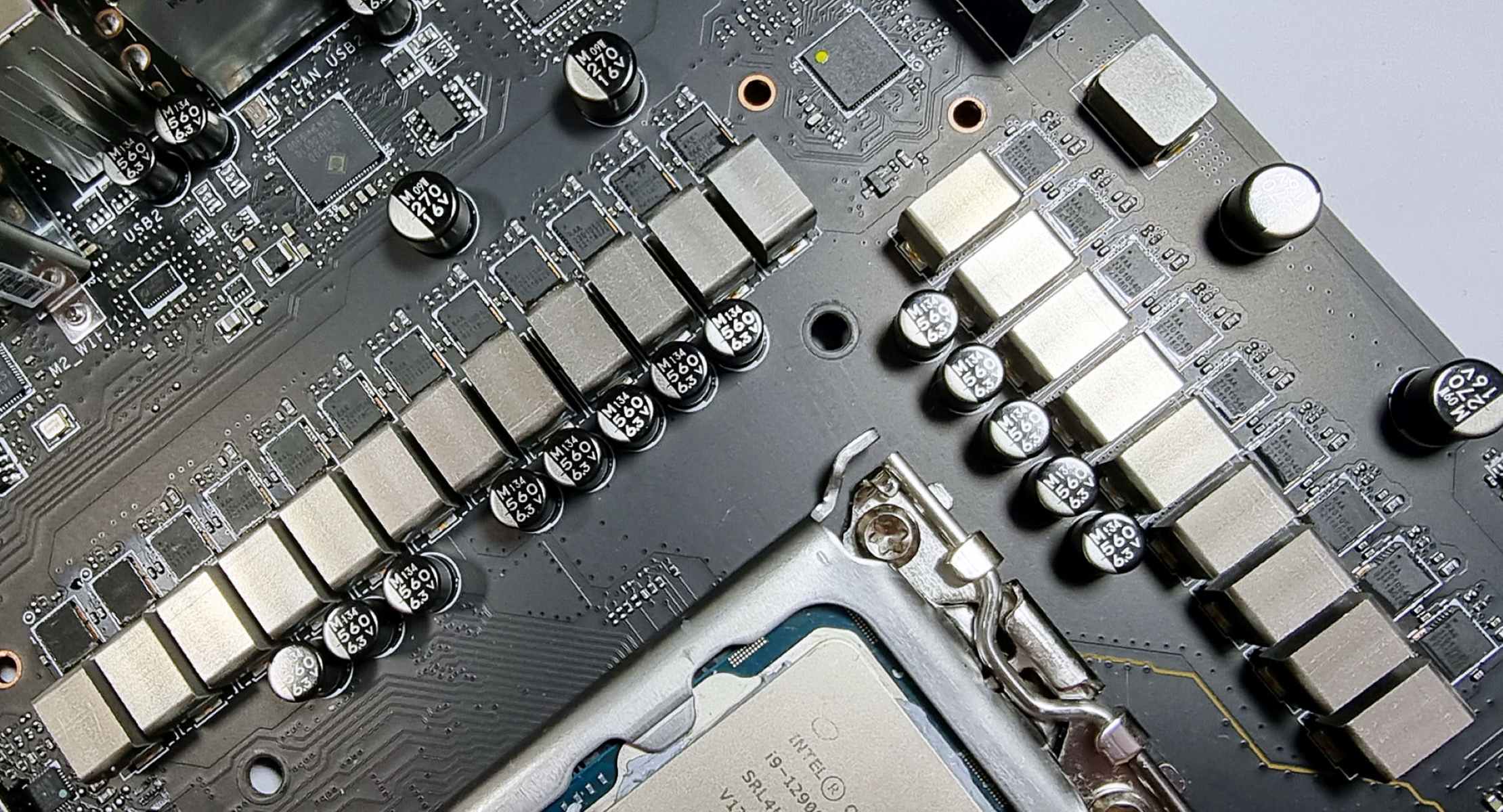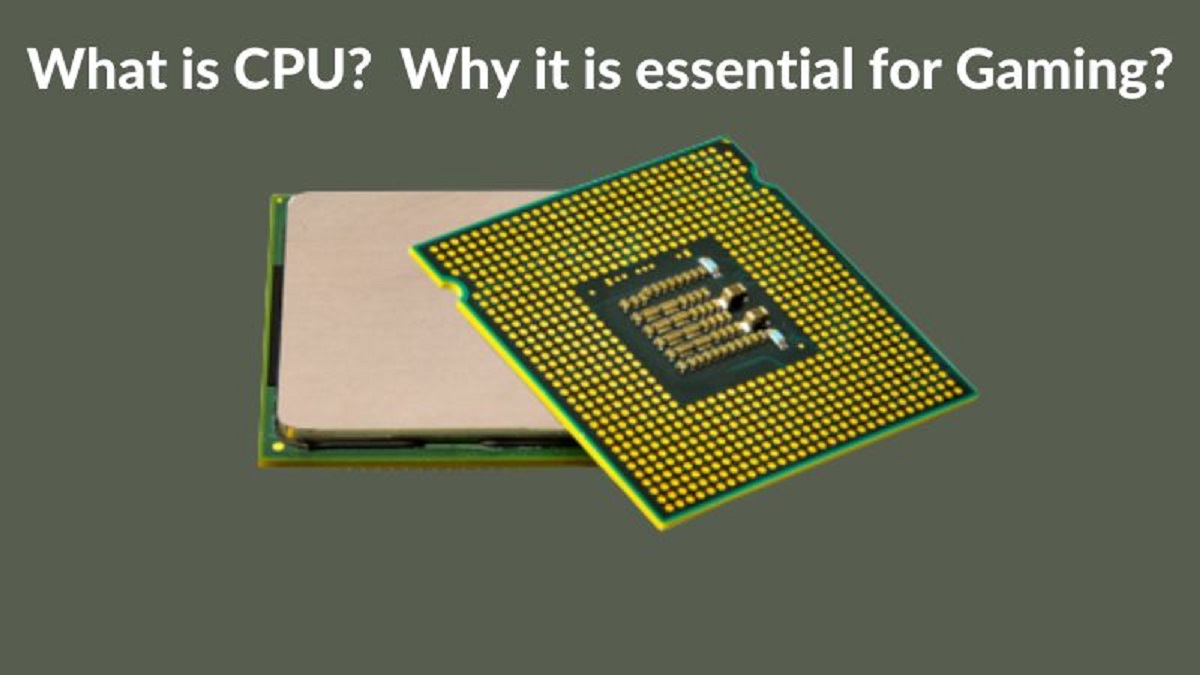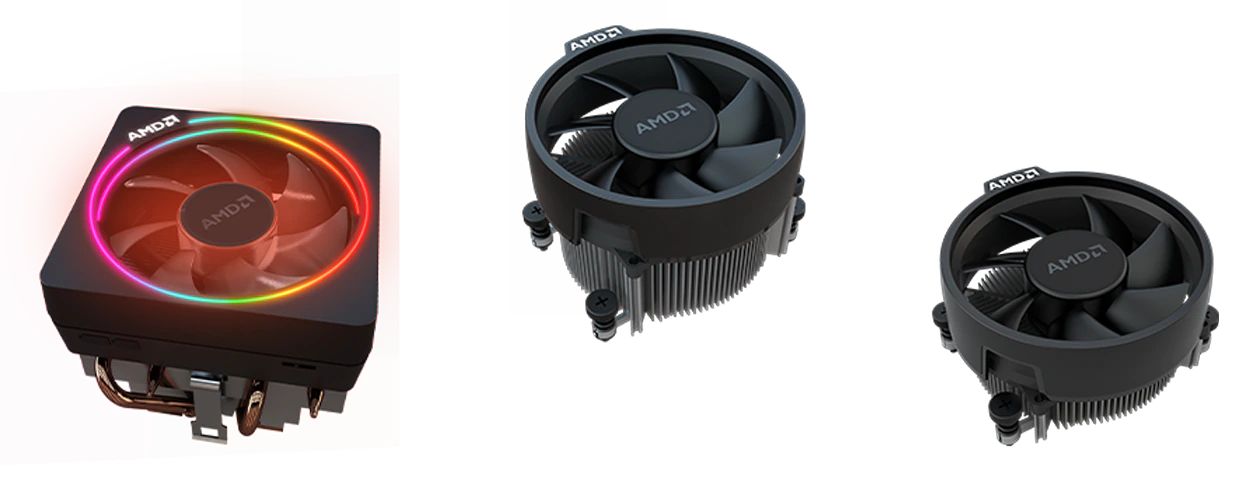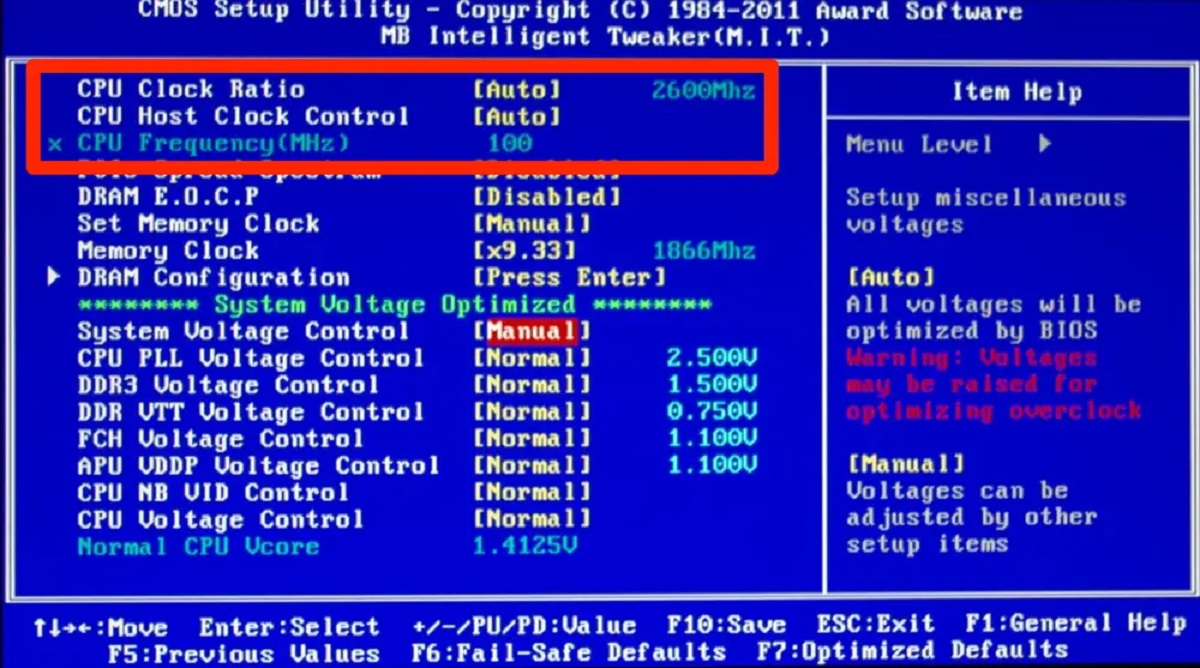Introduction
Overclocking has been a buzzword in the world of computer enthusiasts and gamers for quite some time now. It is a method of pushing a computer’s central processing unit (CPU) beyond its factory-set limits to achieve higher performance. While the idea of squeezing every bit of power out of your CPU may sound tempting, it is important to understand the implications and potential risks involved.
Before diving into the world of overclocking, it is crucial to have a clear understanding of what it entails and how it can affect your CPU’s performance. This article aims to demystify overclocking, by explaining its basics, benefits, risks, and limitations.
So, what exactly is overclocking? Put simply, it is the process of increasing the operating speed of your CPU above its default clock speed. CPU manufacturers set default clock speeds to ensure the optimal balance between performance, heat generation, and power consumption. However, many CPUs have additional headroom available, allowing users to overclock and push their performance even further.
Overclocking can provide a significant boost in CPU performance, resulting in faster data processing, improved multitasking capabilities, and enhanced overall system responsiveness. By running your CPU at higher clock speeds, you can demand more from your computer and potentially achieve better results in resource-intensive tasks such as gaming, video editing, and 3D rendering.
Despite the potential benefits, it is important to approach overclocking with caution. The increased clock speed generates more heat, which can lead to stability issues and potential damage if not properly managed. Additionally, overclocking may void your CPU’s warranty, so it’s crucial to weigh the risks against the potential performance gains.
Before embarking on the overclocking journey, it’s essential to consider various factors such as your CPU’s architecture, cooling capabilities, power supply, and motherboard compatibility. Each CPU is unique, and the overclocking process may vary depending on the specific model and manufacturer.
In the following sections, we will delve deeper into the effects of overclocking on CPU performance, explore the benefits and risks involved, discuss the factors you should consider before attempting overclocking, and provide tips for successful CPU overclocking. So, let’s dive in and explore the exciting world of overclocking!
What is Overclocking?
Overclocking refers to the process of increasing a computer’s central processing unit (CPU) clock speed beyond its default setting. The default clock speed of a CPU is determined by the manufacturer and is designed to provide an optimal balance between performance, power consumption, and heat generation.
When a CPU is overclocked, it runs at a higher frequency than its default clock speed. This increase in frequency allows the CPU to perform more calculations per second, resulting in improved performance in tasks that are heavily reliant on CPU power, such as gaming, video editing, and 3D rendering.
Overclocking can be done either manually, by adjusting the CPU settings in the computer’s BIOS (Basic Input/Output System), or by using overclocking software provided by the CPU manufacturer or third-party developers.
One of the key reasons why people overclock their CPUs is to get better performance without having to invest in a more expensive CPU model. By overclocking, users are able to squeeze additional performance out of their existing hardware, potentially achieving similar performance levels as higher-end CPUs.
Moreover, overclocking can also be a way for computer enthusiasts and gamers to push the boundaries and extract the maximum potential out of their computer systems. It is a way to challenge the limitations set by the manufacturers and achieve a sense of accomplishment by optimizing their hardware.
It’s worth noting that not all CPUs are suitable for overclocking. While many CPUs have unlocked multipliers, allowing for easier and more effective overclocking, others have locked multipliers that restrict the user’s ability to increase the clock speed. Additionally, it’s important to consider factors such as the quality of the CPU cooler, the power supply’s capability, and the motherboard’s compatibility with overclocking before attempting to overclock a CPU.
However, it’s important to remember that overclocking is not without risks. The increased clock speed generates more heat, which can lead to instability and potential system crashes if not properly managed. Overclocking also puts more strain on the CPU, potentially shortening its lifespan and voiding its warranty. Therefore, it’s essential to approach overclocking with caution and take steps to ensure proper cooling and stability of the system.
Now that we have a good understanding of what overclocking is, let’s explore how it affects CPU performance and the benefits and risks associated with this process.
How Does Overclocking Affect CPU Performance?
Overclocking can have a significant impact on CPU performance, enabling users to achieve higher clock speeds and improved overall system responsiveness. By increasing the clock speed of a CPU, each core is able to perform more calculations per second, resulting in faster data processing and improved multitasking capabilities. However, it’s important to note that the extent of performance improvement varies depending on individual CPUs and the cooling solutions used.
When a CPU is overclocked, its frequency is increased, allowing it to complete more instructions within a given period of time. This translates into faster execution of tasks and improved overall system performance. For example, in gaming, a higher CPU clock speed can lead to smoother frame rates, reduced input lag, and improved gameplay experiences.
Moreover, overclocking can have a positive impact on applications that heavily rely on CPU power, such as video editing and 3D rendering. By overclocking the CPU, users can reduce rendering and encoding times, enabling faster content creation and improved productivity.
Another aspect where overclocking can make a difference is in single-threaded performance. Many applications, including older software, rely heavily on single-threaded performance, meaning they utilize only one CPU core. By overclocking, users can achieve increased clock speeds on their CPU cores, resulting in improved performance for these types of applications.
It’s important to mention that the extent of performance improvement achieved through overclocking depends on various factors, including the CPU model, cooling solution, and overall system stability. Additionally, not all CPUs will overclock to the same extent, as some CPUs inherently have higher overclocking capabilities than others due to differences in architecture and manufacturing processes.
However, it’s crucial to bear in mind the potential risks and limitations associated with overclocking. As the CPU runs at higher clock speeds, it generates more heat, requiring adequate cooling to prevent thermal throttling and potential system instability. In some cases, users may need to invest in more robust cooling solutions, such as liquid cooling or high-performance air coolers, to maintain stable temperatures during overclocking.
Furthermore, not all CPUs are created equal, and there is always a limit to how much a CPU can be overclocked successfully. Pushing a CPU beyond its limits can lead to instability, system crashes, and even permanent damage if appropriate precautions are not taken.
Now that we understand how overclocking affects CPU performance, let’s explore the benefits that can be obtained by overclocking a CPU in the next section.
Benefits of Overclocking
Overclocking a CPU can offer several benefits, which make it an enticing option for computer enthusiasts and gamers who are looking to maximize system performance. While the extent of these benefits depends on various factors, including the specific CPU model and cooling solution, here are some key advantages of overclocking:
- Improved Performance: Overclocking allows CPUs to run at higher clock speeds, resulting in faster data processing and improved overall system performance. This can yield tangible benefits in resource-intensive tasks such as gaming, video editing, and 3D rendering, where every bit of extra processing power can make a difference.
- Cost-Effective Upgrade: Overclocking offers a cost-effective way to enhance system performance without having to invest in a more expensive CPU. By tweaking the clock speed, users can potentially achieve similar performance levels as higher-end CPUs while working with their existing hardware.
- Optimized Gaming Experience: For gamers, overclocking can lead to smoother gameplay, reduced input lag, and higher frame rates. This results in a more immersive and responsive gaming experience, especially in graphics-intensive games that heavily rely on CPU performance.
- Quick Content Creation: In tasks such as video editing and 3D rendering, time is of the essence. Overclocking allows users to reduce rendering and encoding times, enabling faster content creation and improved productivity.
- Learning and Experimentation: Overclocking provides an opportunity to learn about CPU architecture, system stability, and cooling solutions. It allows users to experiment and tinker with their hardware, gaining hands-on experience and understanding of how their system functions.
It’s important to note that the benefits of overclocking might not be equally applicable to all CPUs and systems. Some CPUs have more headroom for overclocking than others, and the overall performance gains will vary depending on the specific model and cooling solution used. Additionally, achieving stable overclocking requires careful tuning and monitoring to ensure that system temperatures and voltages remain within safe limits.
While overclocking offers these potential advantages, it’s essential to weigh them against the risks and limitations. Overclocking generates more heat and can lead to instability, system crashes, and potentially voiding the CPU’s warranty. It’s crucial to approach overclocking with caution, take adequate measures to manage heat, and ensure that the system remains stable under increased clock speeds.
Now that we’ve explored the benefits of overclocking, let’s discuss the potential risks and limitations associated with this process.
Risks and Limitations of Overclocking
While overclocking can offer enticing benefits in terms of improved system performance, it is not without its risks and limitations. Understanding these risks is crucial before deciding to overclock your CPU. Here are some of the potential risks and limitations associated with overclocking:
- Increased Heat and Power Consumption: Overclocking increases the clock speed of the CPU, resulting in higher heat generation and power consumption. This can lead to elevated system temperatures and may require additional cooling solutions, such as high-performance air coolers or liquid cooling, to maintain stable operation. Not properly managing heat can result in thermal throttling, system instability, and potential damage to the CPU.
- Reduced CPU Lifespan: Running a CPU at higher clock speeds and voltage levels may shorten its lifespan. Over time, the increased stress on the CPU may cause it to degrade faster or result in premature failure. Therefore, it’s crucial to consider the trade-off between short-term performance gains and potential long-term effects on the CPU’s longevity.
- Voiding Warranty: Overclocking is generally considered an activity that voids the warranty of a CPU. Manufacturers do not provide support or warranty coverage for CPUs that have been overclocked beyond their specified limits. It’s important to note that this is a risk that users willingly choose to take when opting to overclock their CPUs.
- System Instability: Overclocking can introduce instability into the system. Inadequate cooling, improper voltage settings, or pushing the CPU beyond its capabilities can result in system crashes, blue screens of death (BSOD), and other stability issues. Achieving stable overclocking requires careful fine-tuning and monitoring of system temperatures and voltages.
- Compatibility Constraints: Overclocking relies on various components of the system working harmoniously. The motherboard, RAM, cooling solution, and power supply must be compatible and capable of handling the increased demands of an overclocked CPU. In some cases, users may need to upgrade certain components to ensure compatibility and stability.
It’s essential to approach overclocking with a thorough understanding of these risks and limitations. Proper research, careful monitoring, and responsible experimentation are key to maximizing the benefits while minimizing the potential drawbacks.
Before overclocking, it is recommended to read the CPU’s user manual, consult online resources and forums, and follow safe overclocking practices. Understanding your hardware’s capabilities and limits, coupled with diligent testing and monitoring, will increase the likelihood of a successful overclocking experience.
Now that we understand the risks and limitations of overclocking, let’s explore the factors that should be considered before attempting to overclock a CPU.
Factors to Consider Before Overclocking
Overclocking can offer the potential for increased performance, but it is crucial to consider several factors before attempting to overclock your CPU. These factors can have a significant impact on the success and stability of the overclocking process. Here are some important factors to consider:
- CPU Architecture: Different CPU architectures have varying levels of overclocking potential. Some architectures are designed to be more efficient and allow for higher overclocking headroom, while others may have limitations. Research your specific CPU model and its architectural characteristics to get an idea of its overclocking capabilities.
- Cooling Solution: Overclocking increases heat generation, so it is important to have a reliable cooling solution in place. A high-quality CPU cooler that can effectively dissipate the increased heat is essential. Consider options like air cooling or liquid cooling, depending on your specific needs and budget. Proper cooling will help maintain stable temperatures during the overclocking process.
- Power Supply: Overclocking can increase power consumption, so it is crucial to have a power supply unit (PSU) that can handle the additional load. Ensure that your PSU has sufficient wattage and the necessary connections to support overclocking. Remember that instability can occur if the PSU cannot deliver enough power to the system under the increased demands of an overclocked CPU.
- Motherboard Compatibility: Not all motherboards are created equal when it comes to overclocking. Some motherboards are specifically designed with robust power delivery systems and enhanced overclocking capabilities. Ensure that your motherboard supports overclocking and has suitable features, such as quality voltage regulators and BIOS settings for fine-tuning the CPU.
- System Stability: Overclocking requires a stable system foundation. Ensure that your system is stable at its default settings before attempting any overclocking. Test your system for stability using stress-testing software and monitor temperatures to ensure they are within safe limits. Address any underlying stability issues before proceeding with overclocking.
It is also important to note that every CPU is unique, even within the same model. The potential for successful overclocking will vary from one CPU to another. Some CPUs may overclock higher with better stability, while others may have limited headroom. It requires experimentation and testing to find the optimal overclocking settings for your specific CPU.
Lastly, it’s essential to approach overclocking with realistic expectations. Not all CPUs and systems will achieve extreme overclocking results. Keep in mind that the goal is to achieve a stable overclock that balances performance gains with acceptable temperatures and voltage levels.
By considering these factors and approaching overclocking with knowledge and caution, you can increase the chances of a successful and stable overclocking experience.
Now that we have discussed the factors to consider before overclocking, in the next section, we will explore the steps involved in overclocking a CPU.
Steps to Overclock a CPU
Overclocking a CPU involves adjusting the clock speed and voltage settings to achieve higher performance than the default factory settings. While the specific steps may vary depending on your CPU model and motherboard, here is a general outline of the process:
- Research and Preparation: Before overclocking, familiarize yourself with your CPU’s architecture and the specifications of your motherboard. Read user manuals, guides, and online resources to understand the recommended practices for overclocking your specific hardware.
- CPU Cooling: Ensure that you have a reliable cooling solution in place to manage increased heat generation during overclocking. This can involve using a high-quality air cooler or liquid cooling system, depending on your needs and budget.
- Benchmarking and Stability Testing: Establish a stable baseline for your system by stress-testing it at its default settings. This will help ensure that your system is stable before overclocking. Use benchmarking software to measure the performance of your system before making any changes.
- Access BIOS: Restart your computer and enter the BIOS/UEFI setup by pressing the designated key during the boot process (usually Del, F2, or F10). Consult your motherboard’s manual or online resources for specific instructions on accessing the BIOS.
- Adjust CPU Clock Speed and Voltage: In the BIOS, navigate to the overclocking settings. Locate the CPU multiplier or base clock settings, depending on your motherboard. Increase the CPU multiplier or base clock value incrementally to raise the clock speed. Increase the CPU voltage, if necessary, to ensure stability. Keep an eye on temperature readings throughout the process.
- Save and Test: Save your changes and exit the BIOS. Restart your computer and proceed to stress-test your system using appropriate software to verify stability and check for any instability or overheating issues. Monitor temperatures, voltages, and overall system performance during the stress test.
- Fine-Tuning: If stability issues occur, adjust the clock speed and voltage settings accordingly. It may require trial and error to find the optimal balance between performance gains and stability. Iterate the process of testing, adjusting, and monitoring until you achieve a stable overclock.
- Maintain Safe Temperatures and Voltages: Throughout the overclocking process, ensure that temperatures and voltages remain within safe limits. Excessively high temperatures or voltages can lead to system instability, reduced lifespan of components, and potential damage.
- Monitor and L
Tools and Software for Overclocking
Overclocking a CPU requires the use of certain tools and software to adjust key settings and monitor various parameters during the process. These tools help users fine-tune the overclocking parameters and ensure system stability. Here are some common tools and software used for overclocking:
- BIOS/UEFI Setup: The primary tool for overclocking is the BIOS (Basic Input/Output System) or UEFI (Unified Extensible Firmware Interface) setup. Accessible during system bootup by pressing a designated key (such as Del, F2, or F10), the BIOS/UEFI allows users to adjust clock speeds, multipliers, voltages, and other overclocking settings.
- CPU-Z: CPU-Z is a popular utility software that provides detailed information about the CPU, motherboard, RAM, and other system components. It displays real-time data such as clock speed, voltage, and temperature, making it a valuable tool for monitoring the effects of overclocking.
- HWMonitor/HWInfo: HWMonitor and HWInfo are monitoring software programs that provide comprehensive readings of various system parameters such as temperatures, voltage levels, fan speeds, and power consumption. These tools help users keep a close eye on system health while overclocking.
- Prime95: Prime95 is a stress-testing program commonly used to verify the stability of overclocked systems. It puts the CPU under a heavy workload, allowing users to test for stability, observe temperatures, and check for any potential instability or overheating issues. Similar stress-testing programs include AIDA64 and IntelBurnTest.
- MSI Afterburner/EVGA Precision X1: These software utilities are popular among gamers and overclocking enthusiasts for overclocking graphics cards. While primarily designed for GPUs, both MSI Afterburner and EVGA Precision X1 also include CPU overclocking options and monitoring features.
- AMD Ryzen Master/Intel Extreme Tuning Utility (XTU): These manufacturer-specific software tools provide sophisticated options for overclocking compatible CPUs. AMD Ryzen Master is tailored for Ryzen processors, while Intel Extreme Tuning Utility (XTU) is designed for Intel CPUs. They offer user-friendly interfaces to adjust clock speeds, voltages, and other settings specific to their respective CPU architectures.
- ASUS AI Suite/Gigabyte EasyTune: Motherboard manufacturers provide their own software suites that often include overclocking functionality. ASUS AI Suite and Gigabyte EasyTune are examples of such software that allow users to adjust CPU settings, monitor system parameters, and even automate the overclocking process.
It is essential to consult your CPU and motherboard manufacturer’s websites for specific tools and software tailored to your hardware. These tools offer convenient interfaces and options to adjust overclocking settings, monitor system health, and ensure stability.
Remember, always use reliable and trusted software from reputable sources when engaging in overclocking activities. Be sure to read the documentation and user guides provided by the software’s developers to fully understand its features and functions.
Now that we have covered the tools and software commonly used in overclocking, let’s move on to the next section, where we will provide some tips to ensure a successful CPU overclocking experience.
Tips for Successful CPU Overclocking
Overclocking a CPU can be a rewarding experience, but it requires careful planning and execution to achieve optimal results. Here are some tips to help ensure a successful CPU overclocking adventure:
- Do Your Research: Before delving into overclocking, take the time to research your specific CPU model, motherboard, and cooling solution. Understand the recommended settings, limitations, and potential issues associated with your hardware.
- Start with Small Increments: When adjusting clock speeds, voltages, and other settings, start with small and gradual increments. Incremental adjustments allow you to test stability at each step, minimizing the risk of sudden instability or system crashes.
- Monitor Temperature and Voltage: Keep a close eye on temperature and voltage levels during the overclocking process. Use monitoring software to track these parameters and ensure they remain within safe limits. Excessive heat and voltage can lead to instability and potential damage to the CPU.
- Stress Test for Stability: Use stress-testing software like Prime95 or AIDA64 to evaluate the stability of your overclocked system. Run these tests for an extended period to ensure stability under heavy workloads. If instability occurs, adjust settings accordingly and retest.
- Invest in Reliable Cooling: Overclocking generates more heat, so investing in a high-quality cooling solution is essential. Consider efficient air coolers or liquid cooling systems to effectively dissipate heat and maintain stable temperatures.
- Ensure Proper Airflow: Adequate airflow inside the case is crucial for cooling components, especially when overclocked. Position case fans strategically, maintain cable management for optimized airflow, and consider additional fans if necessary.
- Be Mindful of Power Supply: Overclocking puts additional strain on the power supply unit (PSU). Ensure your PSU has sufficient wattage and the necessary connections to support the increased power demand. A robust and reliable PSU is essential for stable overclocking.
- Keep System Drivers and BIOS Updated: Regularly update your system drivers, motherboard BIOS, and other software to ensure compatibility, stability, and to benefit from any performance-enhancing optimizations provided by manufacturers.
- Document Settings: Keep a record of your stable overclocking settings. This documentation will come in handy if you need to restore your system to a stable configuration or troubleshoot issues in the future.
- Know When to Stop: There is a limit to how far a CPU can be overclocked. Pushing the CPU beyond its safe limits can result in instability, reduced lifespan, or even permanent damage. Recognize when your CPU has reached its maximum stable overclock and avoid going beyond that point.
Remember, every CPU is unique, and the overclocking potential may vary. Not all CPUs will overclock to the same extent, even among the same model. Be patient, be prepared to experiment, and be willing to adjust settings to find the optimal balance between performance and stability for your specific CPU.
By following these tips and taking a cautious and methodical approach, you can increase the chances of a successful and stable CPU overclocking experience.
Now that we have covered essential tips, let’s move on to the frequently asked questions (FAQs) related to overclocking.
Frequently Asked Questions (FAQs)
Here are some commonly asked questions about CPU overclocking:
- Is overclocking safe?
- Does overclocking void the CPU warranty?
- Do all CPUs overclock the same way?
- Will overclocking improve gaming performance?
- Is it necessary to have specialized cooling for overclocking?
- Can I revert to default settings if my system becomes unstable?
- Do I need a specific motherboard for overclocking?
- Can overclocking damage my CPU?
- Is it necessary to update BIOS for overclocking?
- Can I overclock a laptop CPU?
When done responsibly and within safe limits, overclocking can be safe. However, improper overclocking or excessive voltage and heat can lead to instability, reduced lifespan, or potential damage to the CPU. It’s essential to follow recommended guidelines and ensure proper cooling and stability.
Yes, overclocking typically voids the CPU warranty. Manufacturers consider overclocking as an activity beyond the specified limits and unsupported by the warranty. It is important to note that warranty terms may vary between manufacturers.
No, each CPU model and architecture behaves differently when it comes to overclocking. Some CPUs have more headroom for overclocking, while others may have limitations. It’s important to research and understand the overclocking potential and specific requirements of your CPU.
Overclocking can improve gaming performance by providing higher CPU clock speeds and better overall system performance. This can result in smoother gameplay, reduced input lag, and higher frame rates, especially in CPU-intensive games.
Specialized cooling, such as high-performance air coolers or liquid cooling systems, is essential for overclocking. Overclocking generates more heat, and adequate cooling is necessary to prevent instability and potential damage to the CPU. Investing in reliable cooling solutions is recommended.
Yes, if your system becomes unstable, you can revert to default settings in the BIOS/UEFI setup. This will restore your CPU’s original clock speed and voltages. Remember to save your stable overclocking settings for future reference.
Not all motherboards are designed with robust overclocking capabilities. Some motherboards have features like improved power delivery systems and enhanced BIOS settings specifically for overclocking. It’s recommended to choose a motherboard that supports overclocking and has adequate features for your needs.
Improper or excessive overclocking, inadequate cooling, and high voltages can potentially damage the CPU. It’s crucial to monitor temperatures and voltages, ensure stability, and stay within safe limits. With responsible overclocking practices, the risk of damage can be minimized.
Updating the BIOS is not always necessary for overclocking, but it can provide compatibility, stability improvements, and additional features. It’s recommended to check for BIOS updates from your motherboard manufacturer and consider updating if it offers benefits for overclocking.
In most cases, laptop CPUs are not designed for overclocking. Due to limitations in cooling and power delivery, laptops typically do not have the same level of overclocking potential as desktop systems. Laptop CPU overclocking is not as common and should be approached with extreme caution, if possible at all.
These FAQs provide answers to some of the common questions related to CPU overclocking. However, it’s important to do thorough research, consult official documentation, and seek expert advice when embarking on the overclocking journey.
With the information provided, you should now have a good understanding of the basics, benefits, risks, and considerations involved in overclocking. Remember to exercise caution, ensure proper cooling, and monitor system stability throughout the process.
If you have further questions about overclocking or need specific guidance, it’s recommended to consult forums, online communities, or seek advice from experienced overclockers to ensure a successful and enjoyable overclocking experience.
Conclusion
Overclocking a CPU can be an exciting endeavor to unlock additional performance from your computer system. By increasing the clock speed and adjusting voltage settings, you can potentially achieve faster data processing, improved multitasking capabilities, and an optimized gaming experience.
However, it is important to approach overclocking with caution and keep in mind the potential risks involved. Increased heat generation, higher power consumption, and the potential for system instability are all factors that must be carefully managed. Adequate cooling, a reliable power supply, and a compatible motherboard are essential for successful and stable overclocking.
Remember to conduct thorough research, understand your specific CPU’s capabilities, and follow recommended practices. Incremental adjustments, stress testing, and monitoring temperature and voltage levels are crucial steps to ensure stability and avoid damage to your CPU and other components.
While overclocking can provide significant performance gains, it is not for everyone. Some CPUs may not have sufficient headroom for overclocking or may present limitations that make it impractical. Additionally, keep in mind that overclocking voids the CPU warranty and should only be pursued if you accept the associated risks.
Ultimately, the decision to overclock your CPU should be based on your needs, experience, and willingness to experiment. If done responsibly and with proper precautions, overclocking can offer a rewarding experience, allowing you to maximize the potential of your CPU without the need for a costly upgrade.
Always remember to prioritize the stability and longevity of your system, as well as the safety of your hardware components. With careful planning, research, and implementation, you can embark on the overclocking journey with confidence and enjoy the benefits of enhanced performance.







